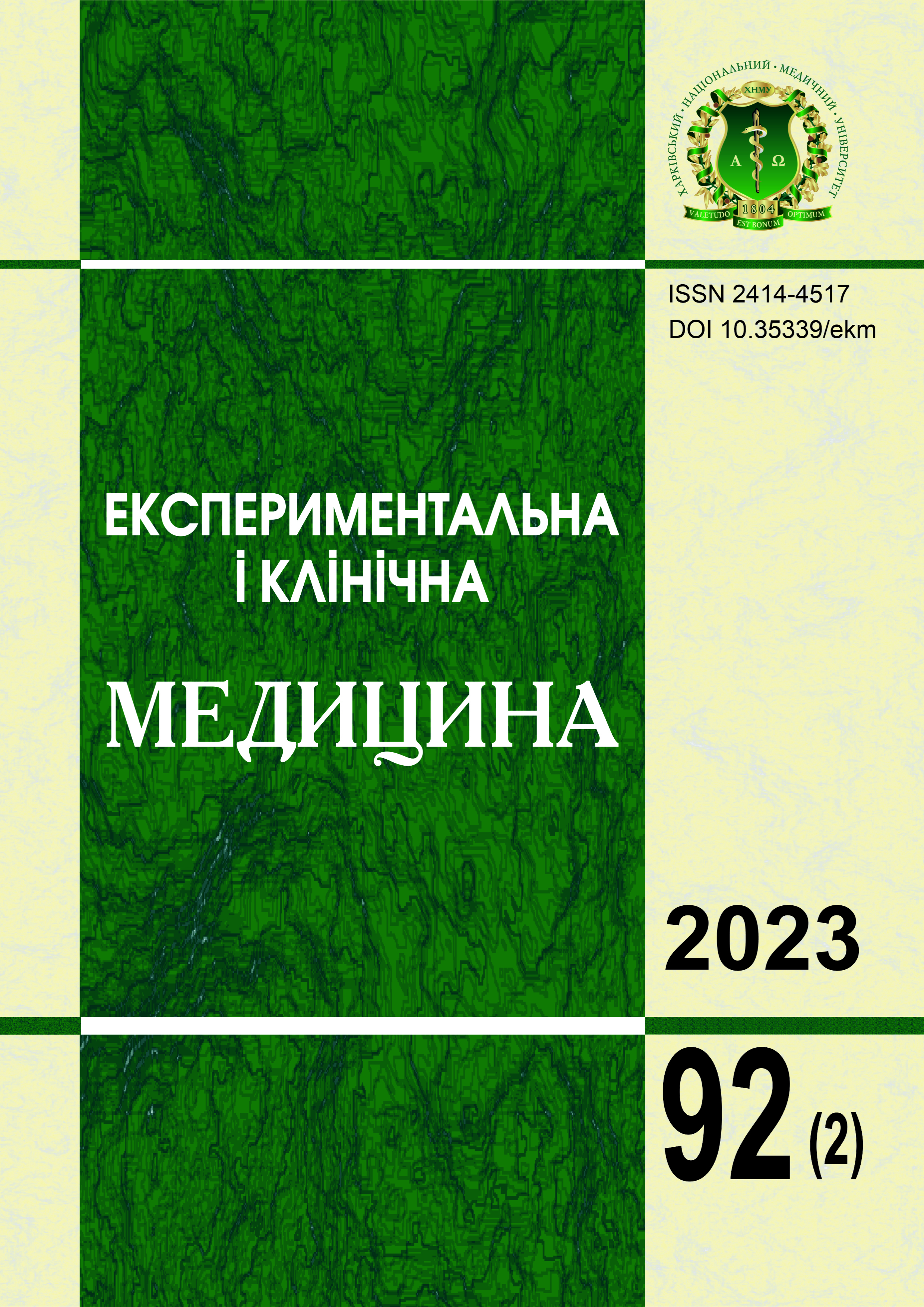Abstract
Modern traumatology and orthopedics cannot be imagined without the use of various implants. However, a number of unresolved issues still inhibit the development of these promising areas of medicine. Infectious complications are the biggest problem in implantology. The purpose of our study was the analysis and scientific evaluation of the results of complex treatment of patients with infectious complications of osteosynthesis. To carry out our research, 265 cases of infectious complications after osteosynthesis in patients undergoing inpatient treatment at the department of bone-purulent surgery of the State University "Institute of Traumatology and Orthopedics of the National Academy of Medical Sciences of Ukraine" for the period 2013–2023 were analyzed. Fractures in the subgroups of "segmental defects" and "marginal defects" after Metal OsteoSynthesis (MOS) with bony plates were of type "B" according to the classification of AO Trauma Foundation, after Blocked Intramedullary OsteoSynthesis (BIOS) – one of type "B", the rest were of type "A". In the subgroups after MOS with bone plates, 30.5% of fractures were open, after BIOS – only one was closed. The analysis of the results of the treatment of patients with various variants of the course of fractures complicated by the infectious process of osteosynthesis showed that in the case of early manifestations of infection and stable metal construction, it is advisable to perform a necrotomy and, if necessary, filling of the "dead space", treatment of soft tissue defects. If this procedure did not produce an effect, or the process occurred in a later period with manifestations of osteomyelitis, there is no chance of preserving the structure. Radical debridement, in this case, must be supplemented with a local antibacterial effect and, in the absence of fusion, stabilization of the fracture. Replacement of segmental defects is carried out, it is expedient to perform both according to the Ilizarov method, and with the use of free bone autoplasty on the upper limb, or the Masquelet technology.
Keywords: osteomyelitis, patients, necrectomy, metal osteosynthesis.
References
Bezstarosti H, Van Lieshout EMM, Voskamp LW, Kortram K, Obremskey W, McNally MA, et al. Insights into treatment and outcome of fracture-related infection: a systematic literature review. Arch Orthop Trauma Surg. 2019;139(1):61-72. DOI: 10.1007/s00402-018-3048-0.
Depypere M, Morgenstern M, Kuehl R, Senneville E, Moriarty TF, Obremskey WT, et al. Pathogenesis and management of fracture-related infection. Clin Microbiol Infect. 2020;26(5):572-8. DOI: 10.1016/j.cmi.2019.08.006.
Onsea J, Depypere M, Govaert G, Kuehl R, Vandendriessche T, Morgenstern M, et al. Accuracy of tissue and sonication fluid sampling for the diagnosis of fracture-related infection: a systematic review and critical appraisal. J Bone Jt Infect. 2018;3(4):173-81. DOI: 10.7150/jbji.27840.
Morgenstern M, Moriarty TF, Kuehl R, Richards RG, McNally MA, Verhofstad MHJ, et al. International survey among orthopaedic trauma surgeons: lack of a definition of fracture-related infection. Injury. 2018;49:491-6. DOI: 10.1016/j.injury.2018.02.001.
Renz N, Cabric S, Morgenstern C, Schuetz MA, Trampuz A. Value of PCR in sonication fluid for the diagnosis of orthopedic hardware-associated infections, has the molecular era arrived? Injury. 2018;49(4):806-11. DOI: 10.1016/j.injury.2018.02.018.
Govaert GAM, Kuehl R, Atkins BL, Trampuz A, Morgenstern M, Obremskey WT, et al. Diagnosing fracture-related infection: current concepts and recommendations. J Orthop Trauma 2020;34(1):8-17. DOI: 10.1097/BOT.0000000000001614.
Foster AL, Moriarty TF, Trampuz A, Jaiprakash A, Burch MA, Crawford R, et al. Fracture-related infection: current methods for prevention and treatment. Expert Rev Anti Infect Ther. 2020;18(4):307-21. DOI: 10.1080/14787210.2020.1729740.
Ferguson J, Alexander M, Bruce S, O'Connell M, Beecroft S, McNally M. A retrospective cohort study comparing clinical outcomes and healthcare resource utilisation in patients undergoing surgery for osteomyelitis in England: a case for reorganising orthopaedic infection services. J Bone Jt Infect. 2021;6(5):151-63. DOI: 10.5194/jbji-6-151-2021. PMID: 34084705.
Declercq P, Zalavras C, Nijssen A, Mertens B, Mesure J, Quintens J, et al. Impact of duration of perioperative antibiotic prophylaxis on development of fracture-related infection in open fractures. Arch Orthop Trauma Surg. 2021;141(2):235-43. DOI: 10.1007/s00402-020-03474-8. PMID: 32409906.
Jorge LS, Fucuta PS, Oliveira MGL, et al. Outcomes and risk factors for polymicrobial posttraumatic osteomyelitis. J Bone Jt Infect. 2018;3:20-6. DOI: 10.7150/jbji.22566.
AO/OTA Fracture and Dislocation Classification Compendium-2018. AO Trauma Foundation, Switzerland [Internet]. https://www.aofoundation.org/trauma/clinical-library-and-tools/journals-and-publications/classification [accessed 20 Jun 2023].

This work is licensed under a Creative Commons Attribution-NonCommercial-ShareAlike 4.0 International License.

